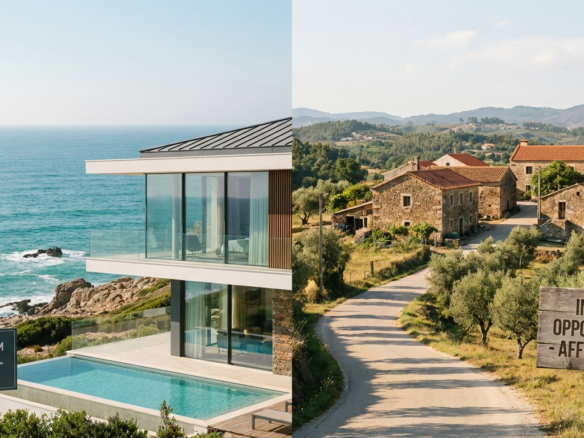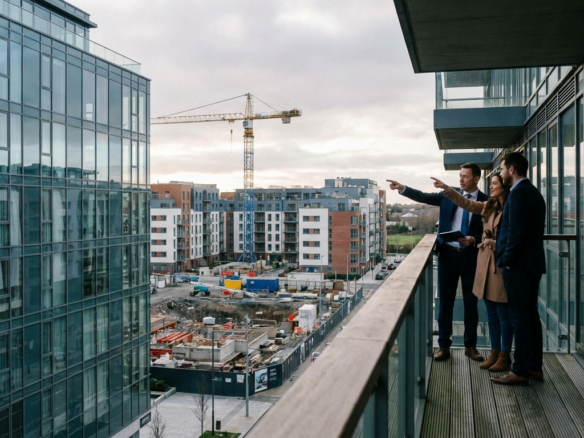German residential property prices demonstrated resilience in the second quarter of 2025, climbing 3.2% as the market begins to stabilize after a challenging period. This upward trend signals a potential turning point for Germany’s housing sector, which has been navigating economic headwinds and shifting monetary policies throughout the past year.
Get 50% OFF!
Subscribe to our newsletter and enjoy a 50% discount on all listing packages, no strings attached!

German Home Prices Jump 3.2% in Q2 2025
The German housing market experienced a notable upturn in Q2 2025, with residential property prices increasing by 3.2% compared to the previous quarter. This marks the most significant quarterly gain since early 2023, suggesting that the market may be finding its footing after months of uncertainty. The price increase represents a stark contrast to the declining trends observed in late 2024 and early 2025.
Statistical data from major German cities reveals that the price recovery has been broad-based, though not uniform across all regions. Munich and Frankfurt led the charge with increases of 4.1% and 3.8% respectively, while Berlin saw more modest gains of 2.7%. The nationwide average reflects a growing confidence among buyers and sellers, indicating that market sentiment has shifted from the cautious approach that characterized the previous year.
Property Market Shows Signs of Recovery After Slump
Germany’s property sector appears to be emerging from its recent downturn, with transaction volumes increasing by 18% compared to Q1 2025. The recovery comes after a prolonged period of market stagnation that saw prices decline for six consecutive quarters through early 2025. Industry analysts point to improved economic conditions and stabilizing interest rates as key factors contributing to this turnaround.
Market fundamentals have strengthened considerably, with inventory levels dropping to their lowest point in 18 months. The supply shortage has created competitive conditions in many metropolitan areas, driving prices upward and reducing the average time properties spend on the market. Current data shows that homes are selling 23% faster than during the same period in 2024, indicating renewed buyer interest and market liquidity.
Regional Variations Drive Uneven Price Growth
The 3.2% national average masks significant regional disparities across Germany’s property landscape. Southern German states, particularly Bavaria and Baden-Württemberg, experienced the strongest price appreciation, with increases of 4.5% and 4.2% respectively. These regions continue to benefit from robust employment markets and strong economic fundamentals that support housing demand.
Northern and eastern German markets showed more subdued growth patterns, with cities like Hamburg and Dresden recording increases of just 1.8% and 2.1%. Rural areas in eastern Germany actually experienced slight price declines of 0.5% to 1.2%, highlighting the ongoing urban-rural divide in the German property market. This geographical variation reflects differing local economic conditions, employment opportunities, and demographic trends that influence housing demand patterns.
Interest Rate Impact on Housing Demand Eases
The European Central Bank’s decision to maintain current interest rates has provided much-needed stability to Germany’s mortgage market. After experiencing significant volatility in 2024, mortgage rates have stabilized around 4.2% for 30-year fixed loans, down from peaks of 4.8% seen in late 2024. This rate environment has improved affordability calculations for many potential homebuyers.
Lending conditions have also become more favorable, with banks reporting increased mortgage applications up 28% compared to Q1 2025. First-time buyer activity has been particularly strong, accounting for 42% of all purchase transactions in Q2. The improved credit environment, combined with steady employment levels and wage growth of 3.1% year-over-year, has restored purchasing power for many German households seeking homeownership.
Outlook Remains Cautious Despite Q2 Gains
While Q2 results are encouraging, market experts maintain a measured outlook for the remainder of 2025. Economic uncertainties, including potential energy cost fluctuations and global trade tensions, continue to pose risks to sustained recovery. Forecasts suggest price growth may moderate to 1.5-2.5% for the full year 2025, as the initial recovery momentum faces seasonal and economic headwinds.
Construction activity remains below historical averages, with new housing starts down 12% compared to 2023 levels. This supply constraint could support prices in the medium term but may exacerbate affordability challenges in high-demand markets. Industry observers expect the market to maintain its current trajectory through Q3 2025, with potential for additional gains if economic conditions continue to improve and consumer confidence strengthens further.
The 3.2% price increase in Q2 2025 represents a significant milestone for Germany’s property market recovery. While challenges remain, including regional disparities and supply constraints, the data suggests that the worst of the market downturn may be behind us. Continued monitoring of interest rates, economic indicators, and regional trends will be crucial for understanding whether this recovery can sustain momentum through the remainder of 2025 and beyond.





Join The Discussion